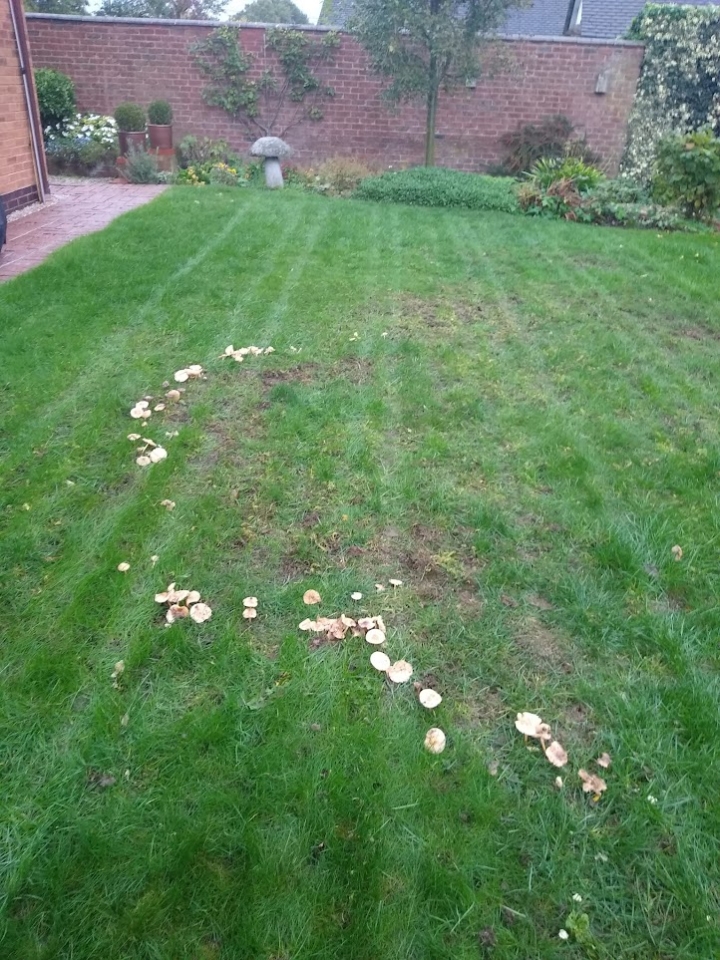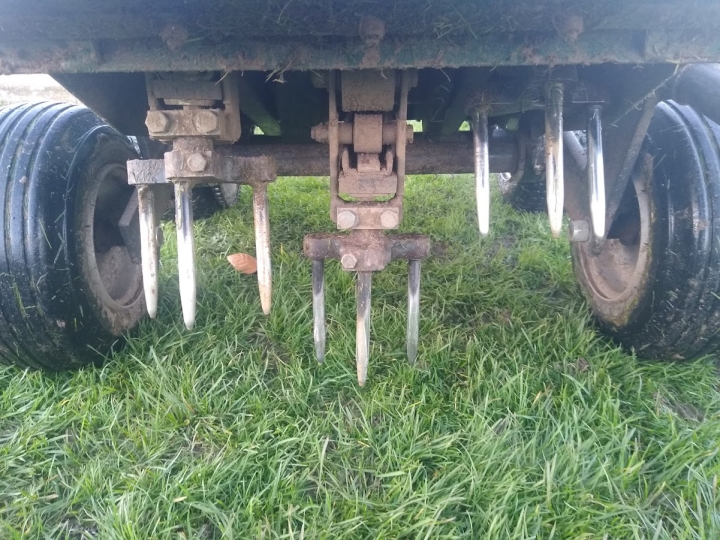How can Fairy Rings be Treated in Lawns?
The dry weather across the whole of this year, combined with hot spells and record temperatures this summer has provided the conditions for fungus to get to work in many lawns. Fairy Ring, and the closely associated Localised Dry Patch can be very damaging and often go undetected for some time...
How can Fairy Rings be Treated in Lawns?
Now, we could spend a while here sharing folklore and myth of fairy rings... but that isn't going to help our grass so please forgive us for skipping past that rabbit hole!
A fairy ring is a naturally occurring ring which can be found in both forested and grass areas. They can be found in a wide range of grassed areas including very lowly managed turf such as council grassed areas, in highly maintained sports turf settings, or down the middle in terms of management within our lawns.
Fairy rings thrive following summer conditions, and in soils where organic matter is higher. This can include buried tree stumps and thatch but can occur anywhere. The fungus feeds off this organic matter to gain enough strength to show on the surface.
This complex lawn problem presents itself as rings of dead grass, green healthy grass and/or mushrooms. There are three main types of fairy ring with the first of the three being the most damaging to our lawns...

Type 1: Rings which causes a loss of grass through the creation of water repellent (hydrophobic) conditions. The grass either side of the ring is often greener, with mushrooms being common at times. Weeds and moss may thrive in the dead areas and are the most common type in lawns. This image is of a newly formed Type 1 fairy ring spotted in Fradley, near Lichfield.
Type 2: This type of fairy ring just causes a dark green, stimulated ring of grass growth. They do not harm the grass so are largely superficial, not harming the grass but damaging visual quaility. In our experience, these are far more common in cricket squares, with Lords itself being a prime example. These rings can product white puff balls.
Type 3: This type of fairy ring is where just mushrooms are present. They do not cause damage to the grass or cause a deep green growth.
Lawn Fairy Ring, Localised Dry Patch and Mycelium
The true problem here is mycelium in the soil.
This is a cotton like fungus which does not want to get wet, possesses water repelling properties much like a fingernail. Within the video below, our founder Jack Chapman shows a lawn which has both some type 1 fairy ring and localised dry patch in a lawn that we provide services to in Solihull. Look closely at the soil core for the white mycelium fungus.
The fungus is not allowing the lawn to rehydrate despite daily autumn rainfall, with moss taking over the dead lawn areas that the fairy ring has caused.
The more mycelium in the soil, the more damaging the effects seen on the surface of the lawn as even less water is able to penetrate these areas to benefit the grass roots.
How to NOT to Treat Fairy Rings in Lawns
We have established that the condition of the soil is not currently suitable for grass growth, so overseeding or watering this area (however well watered it may be!) is not going to solve this lawn fungus - much like with the example in our video!
Over 150mm of rain had fallen since the drought and you can see how much of that had made it's way into the effected area. The mycelium has a waxy coating and needs more attention than water alone to break down. This fungus in the vast majority of cases will still be present in the spring when there is less rainfall to work with.
Five Ways to Treat Fairy Rings in Lawns
1) Aeration and Scarification
Firstly, as with many lawn problems, prevention is better than cure. We recommend that lawns are aerated on an annual basis for wide ranging lawn health. We are excited to be currently adding to our aeration machinery ready for the spring needs of lawns. Forcing our way through these fungus-ridden areas is a must before the problem has even a opportunity to improve.
Aeration has a wide range of benefits, best suited to it's own blog post. It's the ideal mechanical service as both a corrective, and to prepare your lawn for the months ahead.
Fairy rings enjoy organic matter, so controlling thatch in lawns via scarification is a must as a further preventative measure. This is a more labour intensive job than aeration, but again, prevention is better and easier than cure...

Lawn aeration underway on a large lawn in Rugby
2) Wetting Agent Applications

Following up a powerful aeration or lawn repair and renovation with wetting agent applications works really well for us for areas of localised dry patch, and against type 2 fairy rings.
Wetting agents lower the surface tension of the soil, thereby allowing water into the soil easier. We use an intensive wetting agent for this purpose which is quick acting and highly concentrated. Following aeration is a must so it can get into contact with the problem areas quickly and effectively. Watering-in a wetting agent application may be required.
This can be achieved via a DIY method if you were to fork or core the impacted areas, and then use a solution of of couple of tablespoons of washing up liquid in a watering can, saturating the holes. The washing up liquid will work against the waxy layer of the mycelium much like it does against grease and grime.
HOWEVER - the impact of washing up liquid will be shorter lived, and will harm the soil biology. Professional wetting agents are made for this purpose.
You can be more intensive with a fork / corer than this image - you can see again how dry the soil has become by only May of this year and fruiting bodies starting to show within the ring.
3) Fungicide Applications?
Systemic fungicides can be tank mixed with a compatible wetting agent to combat this fungus, along with other more severe lawn disease. In most sports turf / stadium settings there will be a programme in place of preventative fungicide use, with many 'contact' fungicides now withdrawn from use. It sounds easy, but has many drawbacks:
- Fungicides are bad for the environment, and are frequently being withdrawn from use
- Fungicides for fairy ring are very (very) expensive
- They many still require repeat applications
- The fungus could still return - it will continue to exist in the soil at lower levels as you will find out below...!
4) Manual Removal - Dig It Out!
This is the old way, the most labour intensive way, and maybe the most expensive way! Fairy rings can be dug out of the soil. Dependent on what you read, 1 - 2 metres of soil both below and surrounding the fairy ring would need to be removed to be confident of removing enough of the fungus to be confident that it's going to stay at bay. It hurts just thinking about it!
5) Organic Elements to your Lawn Care Programme?
We have no hard evidence of this, but we are finding more fairy ring and hydrophobic soil conditions where the maintenance of the lawn is not what we would describe as balanced. High nitrogen, synthetic fertilisers and a lack of cultural care for the soil in terms of aeration is where we find more problems.
Fairy ring is caused by fungi in the soil overpowering other beneficial fungi in the soil. It's too much of one and not enough of the other due to organic matter - this is what we know. If we aerate well, apply the best wetting agents for the job at hand, and look to help the full spectrum of the soil food web through semi-organic fertilisers, may this prove to be the best and most sustainable mode of attack to combat fairy rings?
Image: Part of a type 1 fairy ring following aggressive scarification

Fairy Rings in Grass - Can We Help?
Fairy rings are one of the more serious of lawn conditions to deal with, but persistence with lawn care practices and products which give a wider benefit is our attitude towards tackling them in a lawn care setting. If you're not sure on what your lawn may be suffering from then feel free to get in touch.
